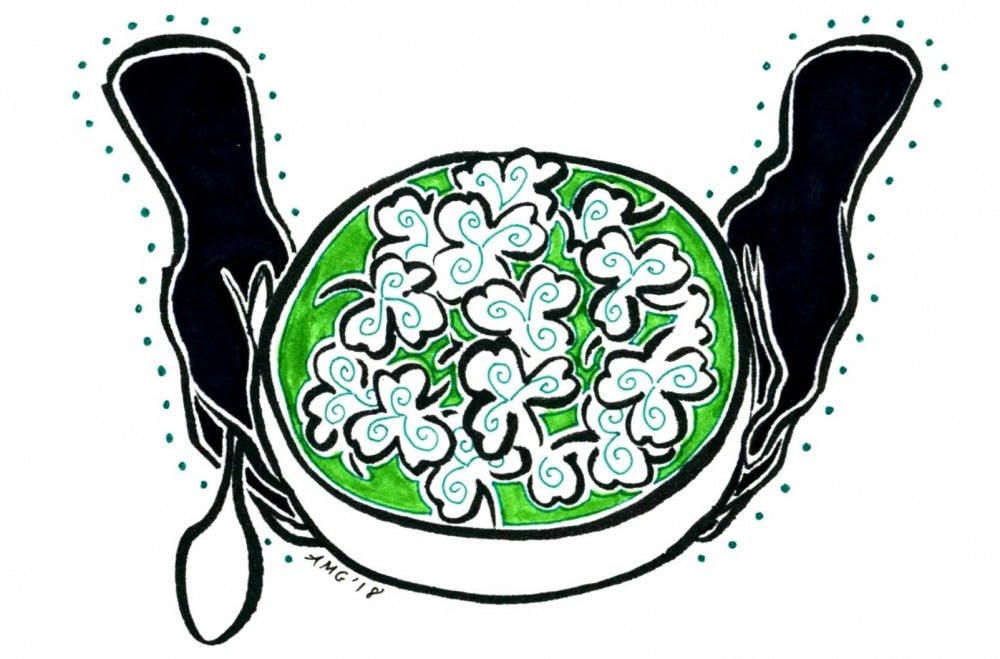There has never been a better time to go green. No, not just because St. Patrick’s Day is approaching, but because spring is the time for fresh produce. Low in calories and high in nutrients, green vegetables are having a major moment, and it is easier than ever to get your five–a–day serving in tasty ways. Fresh, build–your–own salad shops, with the addition of Just Salads on campus, is a growing trend in fast casual dining. For those with more of a sweet tooth, creative recipes that sneak veggies into your favorite comfort foods are popping up all over food blogs, from adding spinach to muffins to shredding zucchini into oatmeal. But how important is it REALLY to get your daily dose of greens? Do these “superfood” veggies actually live up to the hype?
The term superfood is nothing more than a marketing term. Still, they offer real benefits, but only when eaten alongside healthy diets. Greener is greater is the general rule of thumb for picking leafy greens. Salad staples like kale, spinach, and arugula are all no–brainer sources of nutrients. While romaine and iceberg lettuce get bad reps in comparison, they still offer doses of important nutrients.
But there are so many greens, besides the ones offered at Sweetgreen, that can be explored. Dan Connolly, registered dietitian nutritionist for Penn Dining, recommends that college is the time to try new things—that is, try new foods. “If you’re going to be cooking at home, walk through the produce aisle or farmers market and purchase something new every time. Then, look the new fruit or vegetable up to see if they are traditionally eaten raw, roasted, sautéed, etc. and what different herbs and spices are typically paired with them. This will be a good starting point, and you can then adjust to your personal tastes.” Easy new greens to consider are Swiss chard and collard—the sturdy leaves can be used as low–carb “tortillas” that won’t get soggy if you pre–pack your lunch for class.
Connolly also says that green isn't the only color that should be getting all the hype. “People eat with their eyes also, so by eating the rainbow you can create an aesthetically pleasing plate full of fruits and vegetables that’s not only Instagram–worthy, but also full of a variety of nutrients. Aim to have at least three different colors on your plate at each meal.”
While it might seem easier to sip down these veggies than chew them, most nutritionists warn against juice cleanses. “There’s not a lot of scientific evidence showing that cleanses work. When you’re restricting your calories so heavily, you’re going to lose weight, but people who follow these cleanses tend to put the weight right back on and leave themselves at risk of developing nutritional deficiencies.” Registered dietitian Lauren Blake confirmed in an article for US News. Pressed juice can deliver your daily dose of nutrients, but should not be drank as a meal substitute as they lack the fiber necessary to keep you feeling full.
If you are still looking for a nutritious meal on–the–go, swap your juice for a smoothie. It is easy to blend up a customized smoothie at home on the cheap, adding kitchen stables like yogurt or nut butter for a dose of protein and healthy fats. For those without a blender on hand (and a little money to burn), Juice Merchant at the new Franklin’s Table offers freshly blended beverages.
To further buy into the green trend, stores like Whole Foods have started stocking new age concoctions like wheatgrass shots, algae, and chlorophyll powder. Touting mystical health benefits, some users swear by them for radiant skin, boosted energy, and even miraculous weight–loss. Whether these supplements are the real deal or as sci–fi as their name sounds, one thing is for sure: there is no excuse not to get your greens when they're offered in bowl, plate, or even cup.







